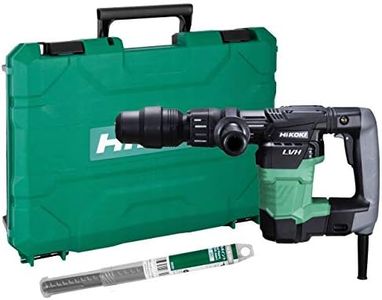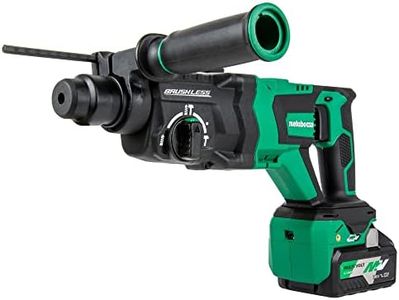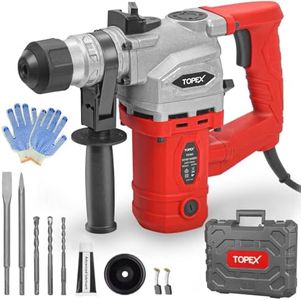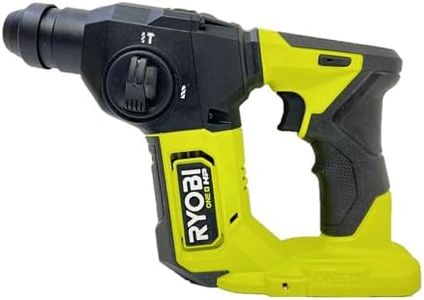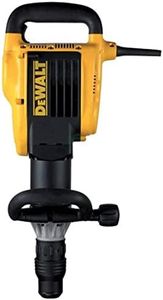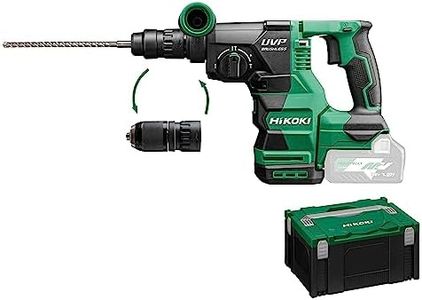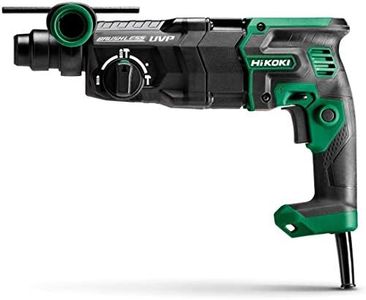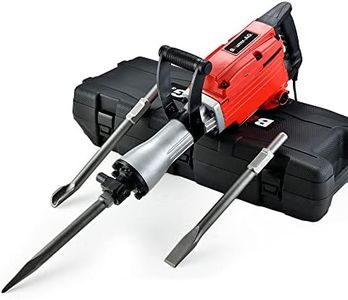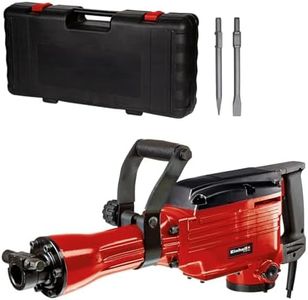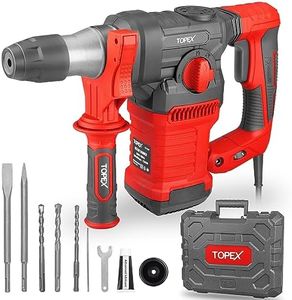We Use CookiesWe use cookies to enhance the security, performance,
functionality and for analytical and promotional activities. By continuing to browse this site you
are agreeing to our privacy policy
10 Best Demolition Hammers
From leading brands and best sellers available on the web.Buying Guide for the Best Demolition Hammers
Choosing the right demolition hammer is essential for safely and efficiently breaking concrete, brick, or other tough materials. These powerful tools can be used for renovation, construction, or demolition work and choosing one that fits the scale and nature of your tasks can make a big difference in both productivity and comfort. To get the most out of your purchase, it’s crucial to understand the key specifications and what they mean for your real-world use.WeightWeight indicates how heavy the demolition hammer is, which directly affects comfort, control, and the type of jobs it's suited for. Lighter models (5-10kg) are easier to handle and cause less fatigue, making them ideal for overhead or vertical work where precision is more important than brute force. Medium-weight hammers (10-15kg) offer a balance – they're effective for most wall or floor tasks without being too cumbersome. Heavy-duty hammers (15kg and above) deliver the most power but can be difficult to maneuver for long periods. Consider the duration and positioning of your work: for lighter, detail-oriented tasks, choose a lighter model, while for breaking up thick concrete slabs, a heavier tool may be more effective.
Impact Energy (Joules)Impact energy, measured in joules, tells you how much force is delivered with each hammer blow, which determines how quickly and efficiently the tool can break materials. Low impact energy (up to 10J) is suitable for tiles or thin surfaces. Medium impact energy (10-20J) strikes a balance between control and power for general demolition tasks like breaking brick or moderate concrete. High impact energy (20J and above) is best when you need to break through thick or reinforced concrete. Assess the toughness of the materials you'll be working on most often, and choose a hammer with appropriate impact energy to avoid overkill or underperformance.
Blows Per Minute (BPM)Blows per minute measures how many times per minute the hammer strikes the surface, which affects both speed and smoothness of demolition. Lower BPM (1,000-1,500) usually means each blow is stronger and better for harder materials. Higher BPM (2,000-3,000 or more) delivers faster, lighter hits, which can speed up work on softer materials or reduce fatigue when chipping away steadily. Decide if you need deep, hard hits or a fast chipping action, considering the materials and the speed you require; tasks that need delicacy benefit from a higher BPM, while tougher jobs can use lower BPM with more force per strike.
Tool Holder TypeTool holder type refers to the way the hammer's chisel or point is secured, affecting both compatibility with accessories and ease of changing bits. SDS-Max is common for professional and larger tools, offering a secure hold and quick bit changes; it's compatible with a wide range of bits. Hex shanks are also popular, especially in heavy-duty hammers, and provide rugged durability for tough conditions. Make sure the tool you choose matches the accessories you may already have or can acquire—this ensures convenience and saves money in the long run.
Vibration ControlVibration control describes features designed to reduce the amount of vibration transmitted to your hands and arms during use. Less vibration can mean much greater comfort, especially for long jobs, and helps prevent fatigue or even injury. Some models have handles with shock-absorbing components or internal mechanisms to dampen vibration. If you plan to use the hammer regularly or for lengthy periods, prioritize models with effective vibration control to protect your health and keep you working comfortably.
Power Source (Corded Electric, Cordless, Pneumatic)Power source impacts the hammer's portability, ease of use, and where you can operate it. Corded electric models provide consistent power for demanding jobs but require access to an electrical outlet. Cordless models offer flexibility and freedom of movement, often suited for lighter tasks or locations without easy power access, but battery life limits work duration. Pneumatic (air-powered) hammers are typically used in industrial settings and need a powerful air compressor. Think about your typical job site—if you work in one place, go corded; if you need to move around or lack power outlets, cordless may be better, understanding the trade-off in runtime and power.

